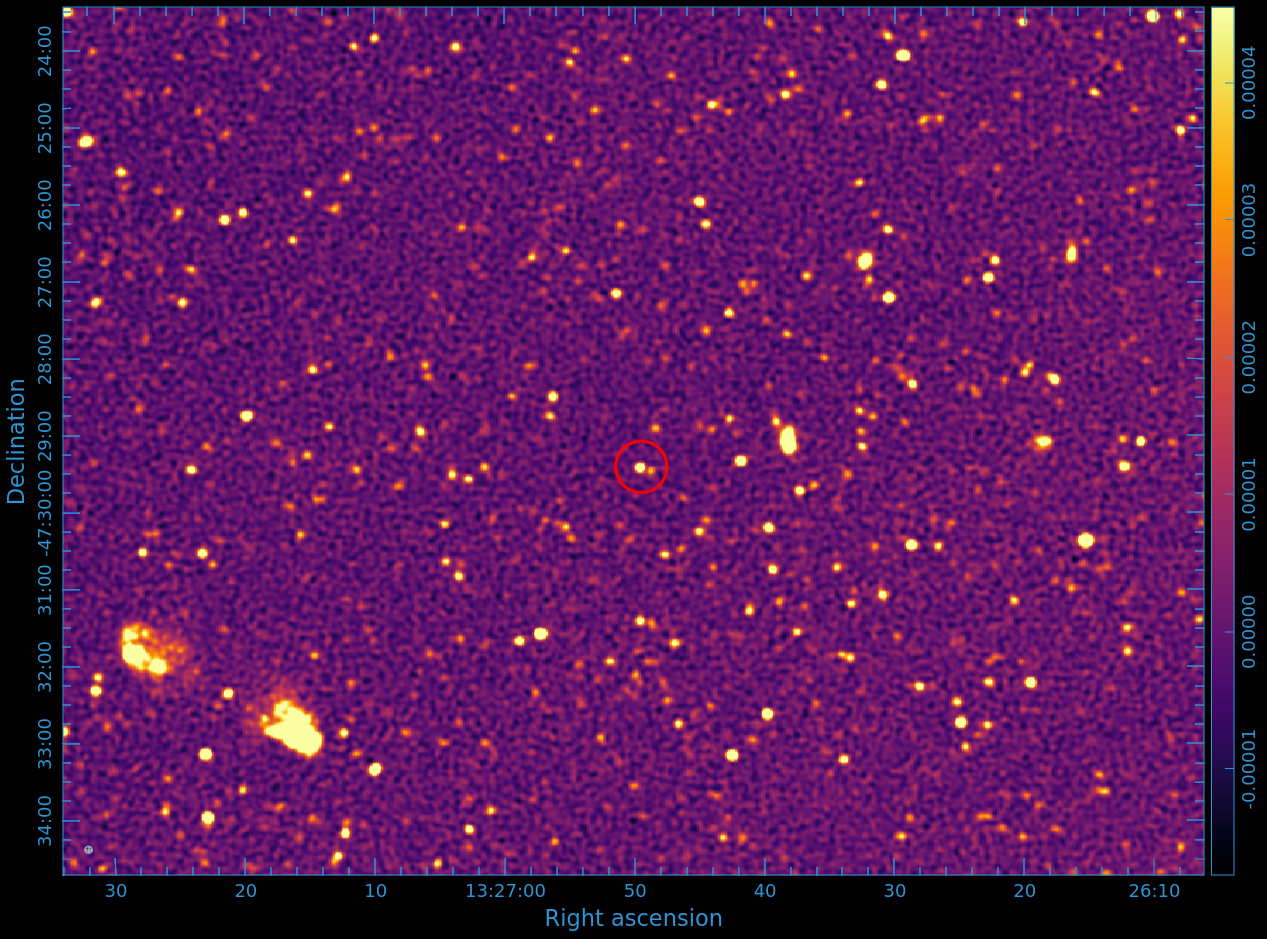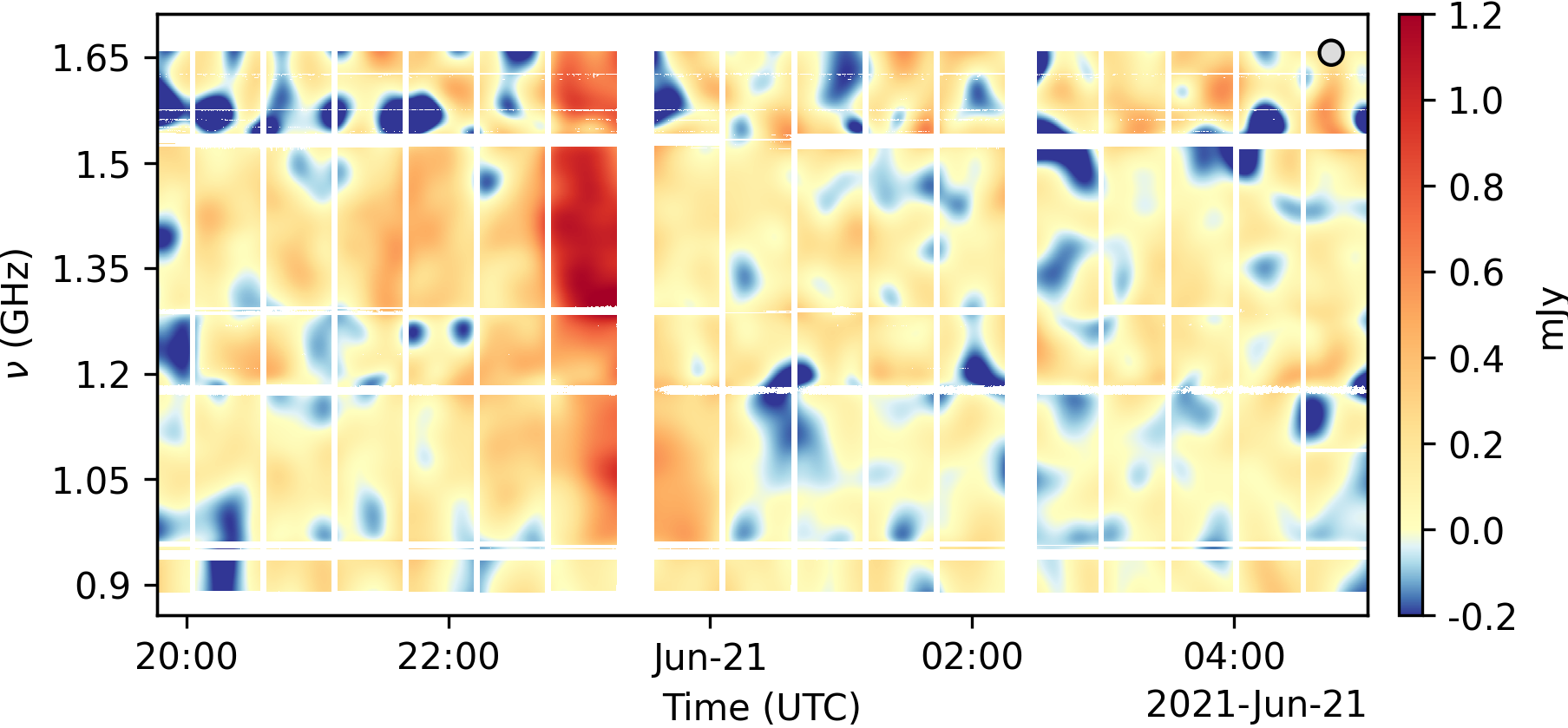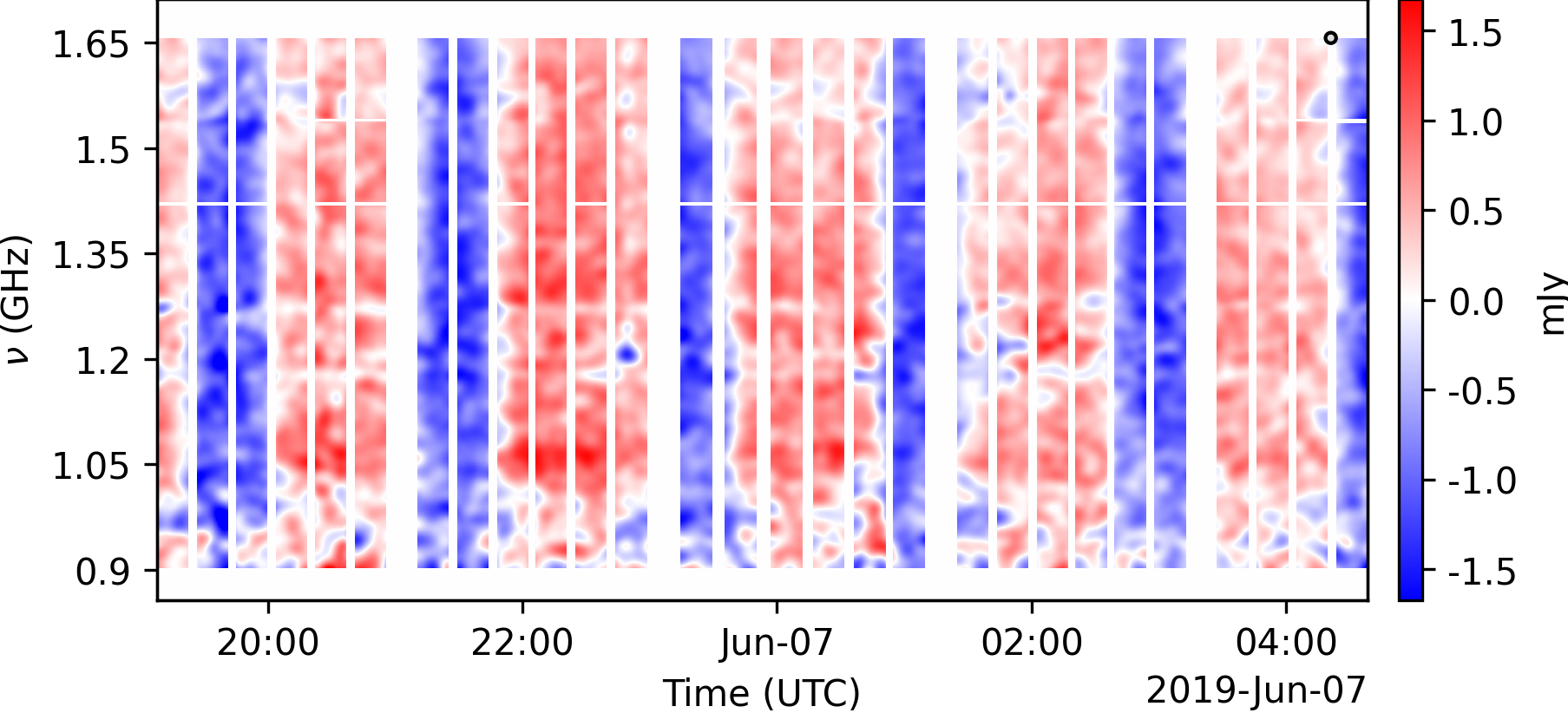Thanks to its exceptional sensitivity and wide sky coverage, MeerKAT enables us to observe the universe with unrivalled speed. This makes the telescope an ideal tool for detecting time-varying sources, in particular transient sources that appear and disappear suddenly. This research is also part of the Breakthrough Listen initiative’s search for technological signatures - indicators that could reveal the presence of extraterrestrial intelligence.
A fruitful international collaboration
The origins of this project can be traced back to the discovery of the RATT PARROT pulsar, an unusual variable object detected by chance during the processing of observations initially intended for other studies. Although programs dedicated to the search for transient sources were already being run by other groups, the team saw an opportunity to start looking for these objects in a systematic way, exploiting existing MeerKAT imaging observations. Indeed, the telescope’s archives, which already contain over six years of observations, offer a rich search ground for unearthing these exotic sources.
Professor Oleg Smirnov of Rhodes University commented : “This discovery has shown us that many more transient objects are likely to be lurking in the MeerKAT data. Thanks to the telescope’s exceptional sensitivity, we can now detect them semi-automatically.”
Paris Observatory, a pioneer in innovative digital methods
Paris Observatory played a key role in this project, thanks to its cutting-edge expertise in data processing and numerical analysis.
Cyril Tasse, researcher at Paris Observatory, explains : “The new generation of radio telescopes is generating huge amounts of data, making conventional imaging methods obsolete. In collaboration with our South African colleagues, we have developed new mathematical methods aimed at solving this very large numerical problem. One of these techniques now enables us to follow in detail the variable emissions of a very large number of astrophysical objects, such as pulsars, active stars or exoplanetary systems.”
Despite its recent launch in March 2024, the project has already achieved its first successes. These include the detection of several millisecond pulsars (MSPs), including the exotic “spider” variety. These pulsars orbit so close to their companion star that they “nibble” material from it, a process that can also cause regular eclipses, making the pulsar appear to be a transient source. Pulsars are usually detected by specialized, dedicated observations. The detection of millisecond pulsars in conventional radio imaging data demonstrates the potential of this technique to discover more of these fascinating objects.
The collaboration between South African, French and international researchers illustrates the synergy between the search for fascinating astrophysical objects and the quest for intelligent life beyond Earth.
As Dr Ian Heywood, from Oxford University and Visiting Professor at Rhodes University, points out : “The universe never ceases to amaze us with the diversity of phenomena it generates. If the processes that gave rise to intelligent life on Earth exist elsewhere, instruments like MeerKAT offer our best chance of finding our cosmic neighbors.”
Towards new discoveries
The team has already identified other promising transient objects in the MeerKAT data, and new discoveries are expected in the coming months. These results pave the way for further exploration of the transient universe, thanks to the combined expertise of the researchers and the cutting-edge technologies deployed.
— -
References :
Link to partner university websites :
● Center for Radio Astronomy Techniques and Technologies at Rhodes University (RATT)
● South African Radio Astronomy Observatory (SARAO)
● University of Oxford
● Breakthrough Listen Initiative
● University of Cape Town
Link to publications - Monthly Notices of the Royal Astronomical Society :
● “Mining the time axis with TRON – I. Millisecond pulsars in Omega Centauri, Terzan 5, and 47 Tucanae detected through MeerKAT interferometric imaging”
● “Mining the time axis with TRON. II. MeerKAT detects a stellar radio flare from a distant RS CVn candidate”
— -



